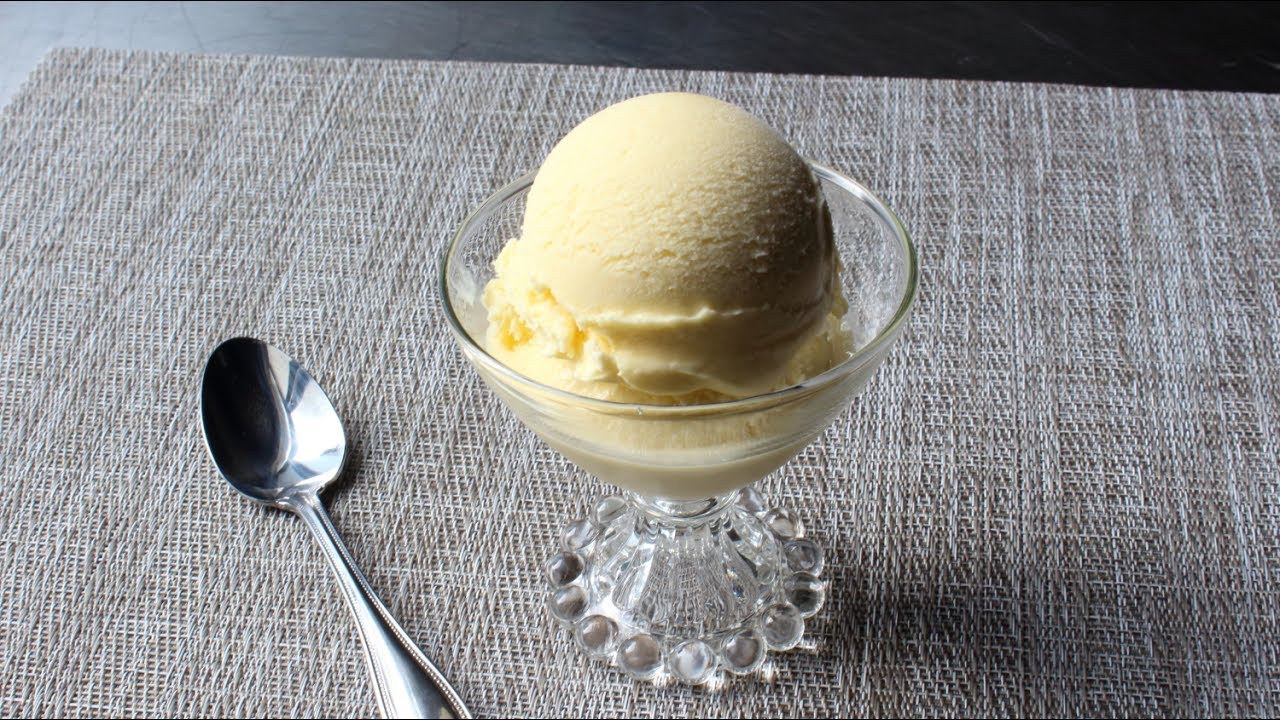Homemade custard ice cream is gratifying and a delight to prepare. Traditional method of ice cream making uses a custard base which needs eggs as a prime ingredient, especially the Italian and French ice cream. Eggs play a crucial role in ice cream, acting as an emulsifier and stabilizing agent.
Benefits of using eggs in custard ice cream
- Egg yolks play a significant role in custard-based ice creams. They not only help create a smooth texture but also hold the fats and liquids in the ice cream together. An emulsifier that is provided by eggs destabilizes the milk/cream blend. It promotes small ice crystals that make the ice cream smoother.
- It improves flavor.
- Eggs work as a stabilizer agent in custard-based recipes, thus, it improves their shelf life.
- Emulsification in the egg also affects the stability of ice cream. Egg yolks help the ice cream melt slower and hold its structure well. More the yolks, slower will be the melting process. But, it is important to use them sensibly.
- Making a perfect creamy custard base can be challenging for some. Knowing how to make ice cream at home need to follow a proportionate recipe. Here are some tips to help you achieve the best ice cream base without the overpowering egginess.
How to avoid “too Eggy” custard ice cream?
Restricting the number of egg yolks
No egg ice cream has a restricted amount of fat from the milk and cream, whereas using the yolks makes the ice cream rich and creamy. There is no thumb rule about the number of eggs to use, however, it depends on the type or flavor of ice cream. Two or up to 6 eggs are enough to provide creaminess and, the best part is the mixture won’t taste eggy.
Controlled cooking temperature and time
Heating the egg yolks with milk thickens the custard. The alpha-amylase enzyme in egg yolks defines the gooeyness of custard. It deactivates fat emulsion by heat. Don’t cook the yolks at high temperatures for too long and temperatures more than 149°F. Heating the custard beyond this temperature for a long time may curdle the mixture. Prolonged heating causes the mixture to become too thick, resulting in an overpowering eggy taste. The undercooked custard may have a soupy texture near boiling point.
Double boiling method and continuous stirring over low heat are essential. You must invest in a good cooking thermometer to monitor the temperature and stop cooking as the mercury hits that crucial temperature point!
Whisk the custard vigorously
Sometimes when you erroneously cook custard over high heat, it becomes lumpy. This happens because of the coagulation of protein by heat. Heating the custard for an extended period will cause it to curdle. To fix curdling, immediately turn off the gas stove and whisk for about a minute. This will destroy the enzymes in an egg that inhibits cornstarch’s stimulation. Whisk until the custard loosens. The perfect consistency would be until it coats the back of the spoon.
Strain the egg mix
Straining the egg mix with a fine mesh after whisking is essential before adding it to the ice cream maker. This little stride can remove any masses and skin that could otherwise spoil the velvety texture of your custard base.
Adding an extra bit of vanilla extract
We always use vanilla essence in custard ice creams. Add a bit of extra vanilla essence to warm custard and allow the flavor to seep in for 30 minutes. This will not only yield a lovely aroma but mask any insane eggy notes as well. You might also use vanilla bean paste or fresh vanilla pods for an extra flavor! Then reheat to bubble again and follow your regular recipe.
*This tip works like wonder with any flavor.
Add a pinch of salt to the custard
Salt serves many good purposes in ice cream, including improving the taste of eggs. Add a pinch of kosher salt or sea salt to your custard to suppress the smell of eggs besides contributing more depth and rich flavor to the ice cream.
Salt brings out the sweetness, cutting through the richness of the yolks and making the flavors pop.
Insufficient sugar can cause the egg yolks to overcook
Sugar provides a structure for the ice cream. It is also one of the major culprits in the custard base, tasting it too eggy. Too little sugar is likely to overcook and scramble the yolks.
So, ensure you follow the recipe and include the right amount of sugar. Not only will it provide the perfect amount of sweetness, but it will also create a wonderfully smooth texture that is not overwhelming with an eggy taste.
Increasing the part of milk and cream
If you don’t want your French vanilla ice cream to taste like scrambled egg, increase the proportion of dairy. The eggy flavor would be from the egg whites, so you can skip it and add xanthan gum to the custard recipe. Substitute it with heavy cream or milk to dilute the egg flavor.
Conclusion
Custard or French vanilla ice cream, filled with rich aromas and creamy textures, is a delight. You can master the art of homemade ice cream with eggs with the above pro tips, ensuring a smooth and delicious without tasting too eggy.
So why not head to your kitchen, gather your ingredients, and give it a try. Happy ice cream making!

